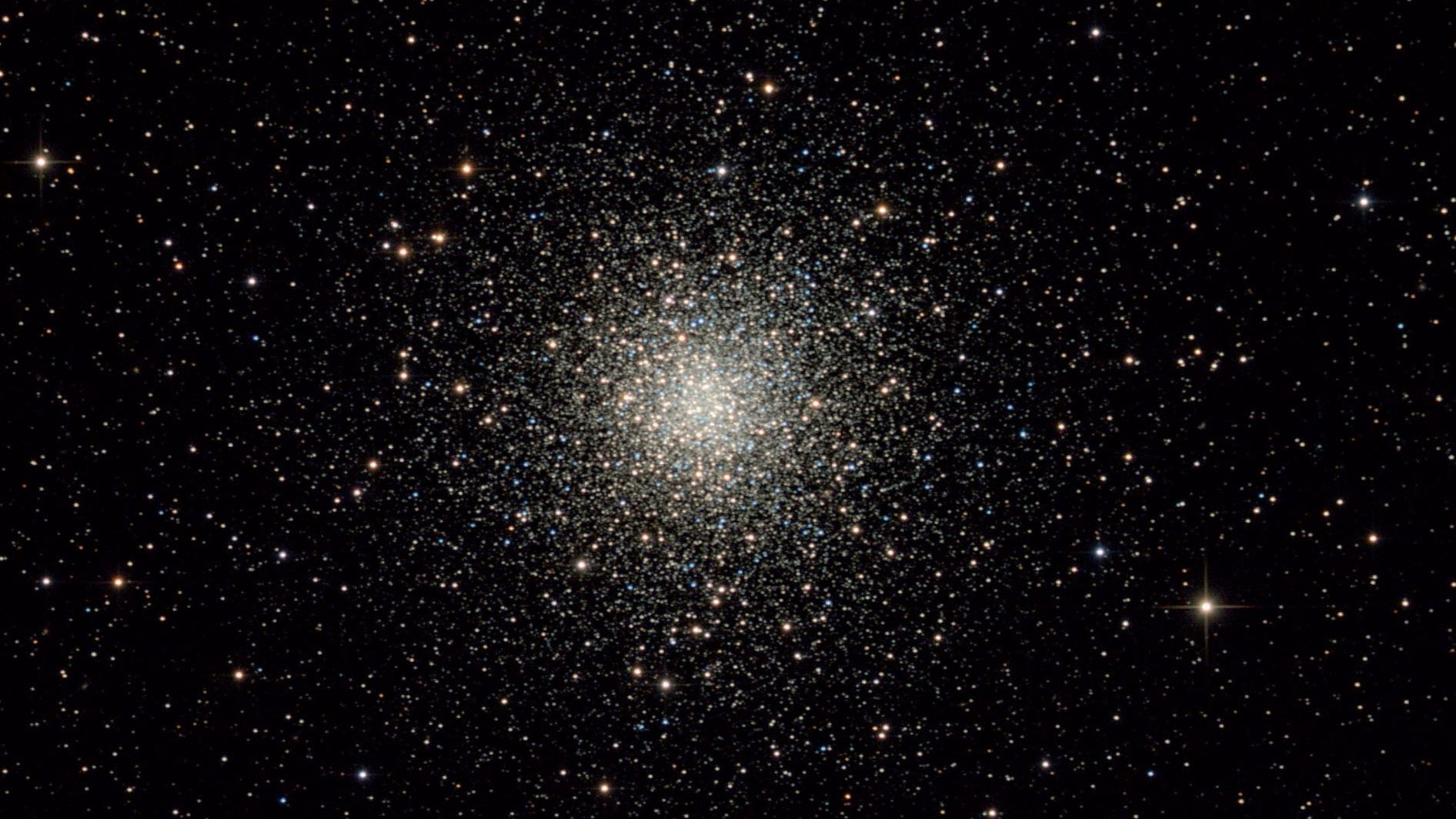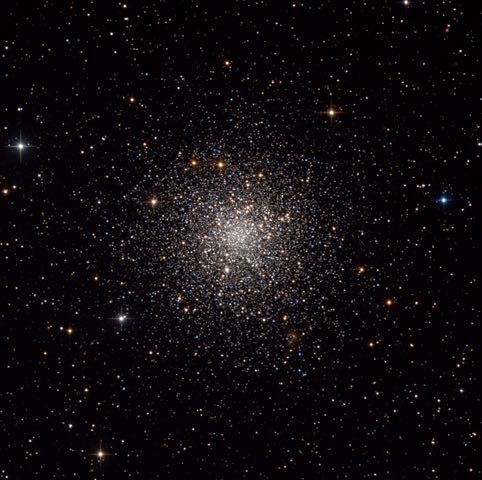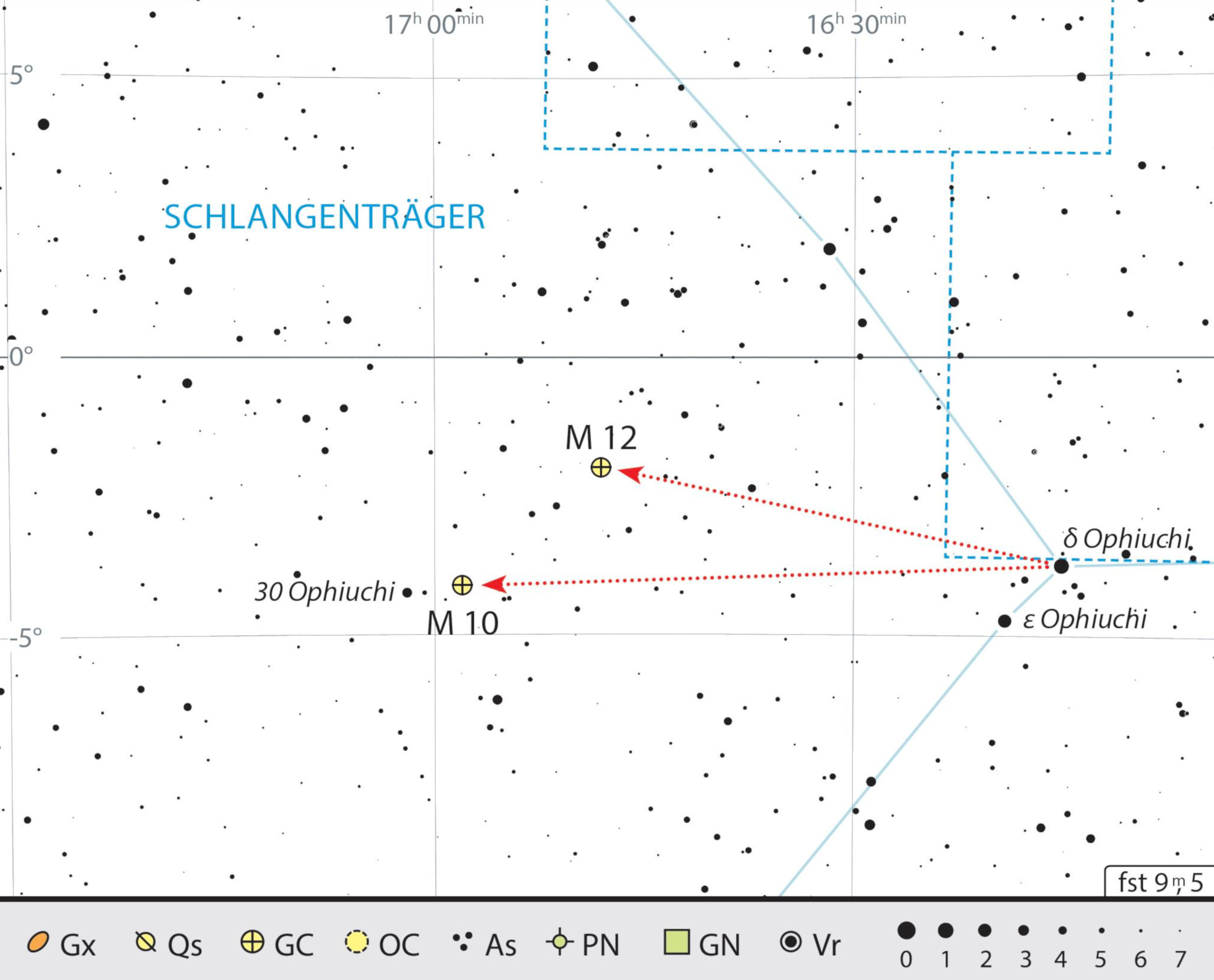M10 and M12 – a set of twins in the early summer sky
The short distance between them makes the comparison between these two globular clusters in Ophiuchus a pleasure - but which one can be better resolved?
 Globular cluster M10 in the constellation of Ophiuchus. Bernhard Hubl/CCD Guide
Globular cluster M10 in the constellation of Ophiuchus. Bernhard Hubl/CCD Guide Drawing of globular cluster
M10 through a 4 inch Newtonian telescope with
48 times magnification. Peter Kiss
Drawing of globular cluster
M10 through a 4 inch Newtonian telescope with
48 times magnification. Peter KissThere are only a few objects in the city night sky that are as close together as M10 and M12. Both globular clusters appear equally bright (M10: mag. 6.6; M12: mag. 6.1) and are only around 2° apart, so they are sometimes referred to as the set of twins in Ophiuchus.
And although both objects seem quite lost on a star chart as they are in an area with very few other stars, they are relatively easy to find: at the same declination as M10 and M12, around –4°, lies a quite striking collection of about half a dozen stars, of which the two brightest, ε and δ Ophiuchi, are clearly visible even in a finderscope. From this star formation, pan a good 10° eastwards through a star-free area to 30 Ophiuchi, a magnitude 5 star. From here, it is just a blink of an eye to M10, which lies 1° to the west.
Surprising comparisons
 Globular cluster M12 is located not far from M10 in the night sky. Bernhard Hubl/CCD Guide
Globular cluster M12 is located not far from M10 in the night sky. Bernhard Hubl/CCD GuideIt's very interesting to compare M10 with M12, which is possible thanks to their close proximity to one another. What is immediately striking is that M10, although the fainter of the two, can be better observed than M12 with a "small" 80-mm refractor. Compared to M10, M12 appears to be a little fainter, smaller, more elusive, and less substantial than its twin partner.
M10 also has the advantage that it is accompanied by a small star to its south-east, which also serves as a focusing aid at higher magnifications: as the star is brought more sharply into focus, the globular cluster will also become more clear and rich in contrast.
Higher magnification, different image
Most surprisingly, a completely different observation result is obtained if you switch to a 120-mm refractor. Now, using the averted vision technique and 120x magnification, you will see single stars flash again and again in M10’s halo. Overall, however, the granulation can be much better resolved with the actually darker M12 than with M10. M10 seems altogether denser and more concentrated, M12, on the other hand, appears looser and more extended, which is probably the reason why individual members of the cluster, at least in the outer halo-area, are more easily resolved than with M10.
Overall, however, any observation from an urban location of these two globular clusters remains a very subjective matter. Every city astronomer will certainly have had his own – often differing – experience.
 Location map of the two globular clusters M10 and M12 in the constellation of Ophiuchus J. Scholten
Location map of the two globular clusters M10 and M12 in the constellation of Ophiuchus J. ScholtenAuthor: Karl-Peter Julius / Licence: Oculum-Verlag GmbH
